“Una schodella di sardonio et chalcidonio et agatha, entrovi più figure et di fuori una testa di Medusa”: this is how the Tazza Farnese, a masterpiece of Hellenistic glyptics, was listed in the inventory of Lorenzo the Magnificent ’s possessions drawn up after his death in 1492. It is the largest hard stone vase worked in relief from the ancient world that has come down to us. It dates from between the 3rd and 1st centuries BC and was probably made in Alexandria, Egypt. We do not know its ancient history (some have speculated that it arrived from Egypt after Augustus’s victory at Actium by becoming part of the treasury of Rome, and that after the fall of the Empire it went to Constantinople): we do know that in 1239, the year in which it is certainly first attested, it figured in the court of Frederick II, and from southern Italy it then passed on to Persia (to Herat or Samarkand, where it is documented in 1430 thanks to a drawing by the Persian artist Mohammed al-Khayyam). Then, in the mid-15th century, it reappeared in Naples, in the collections of Alfonso V of Aragon, where Poliziano saw it in 1458. It later passed to Cardinal Ludovico Trevisan and then from him, in 1465, to Pope Paul II (born Pietro Barbo). In 1471 the work was acquired by the Magnifico, at the time of his embassy to Rome to greet the newly elected pope Sixtus IV. There is, moreover, a note by Lorenzo, dating from that very trip, in which the Farnese Tazza is called “la scudella nostra di calcedonio intaggliata” and is said to have been brought to Florence from Rome itself.
The precious cameo was still in the Medici collections in 1537, when Margaret of Austria, only fifteen years old, had been widowed by Alessandro de’ Medici, who had been murdered by her cousin Lorenzino. The following year Margaret went in marriage to Ottavio Farnese, son of Pier Luigi, duke of Castro and future duke of Parma and Piacenza: it was with Margaret’s dowry that the gem entered the Farnese collection and took on the name by which it is universally known today. Another transition concerned the gem in the 18th century, when it passed into the collections of the Bourbons. With the Unification of Italy, the Farnese Cup, which was part of the Royal Bourbon Museum established in 1816, flowed into the state collections and automatically became part of the National Archaeological Museum of Naples, heir to the Bourbon museum. Its life at the museum has not been the smoothest: in fact, we have risked losing it twice. The first time was in 1925, when a museum custodian, Salvatore Aita, on the night of October 1 to 2, deliberately struck the display case that held it (apparently he was angry at some disciplinary action the museum administration had taken against him), knocking it over and shattering it. Painstaking restoration was necessary to reassemble the pieces of a gem that, up to that point, had remained almost intact, except for a chipping and the hole made at the time of the Magnifico, probably to add a foot to the Cup. The second during World War II: to save it from Nazi art raids, superintendent Amedeo Maiuri walled up the Farnese Tazza, along with the Blue Vase of Pompeii, in a cavity in the museum walls.


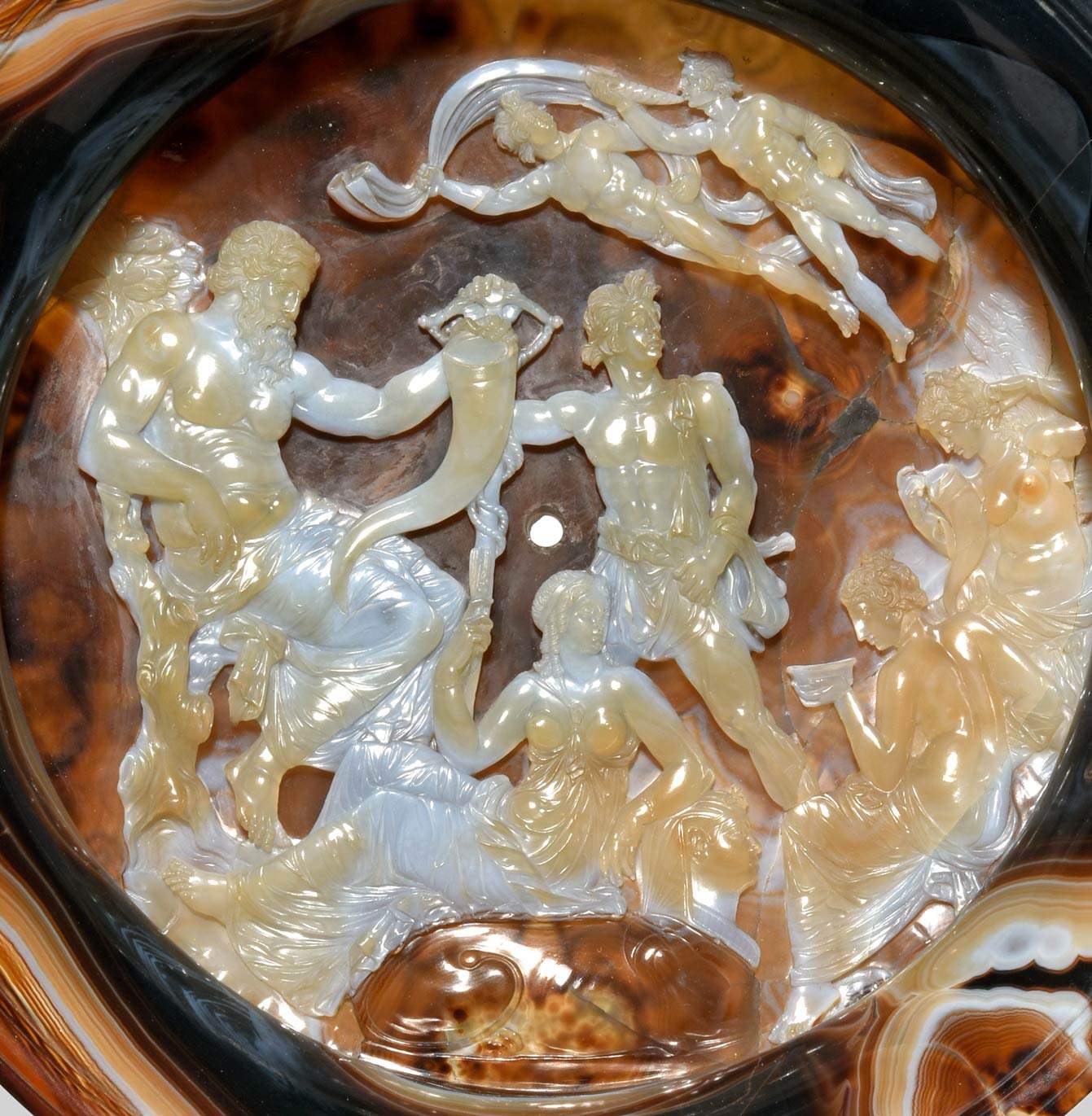

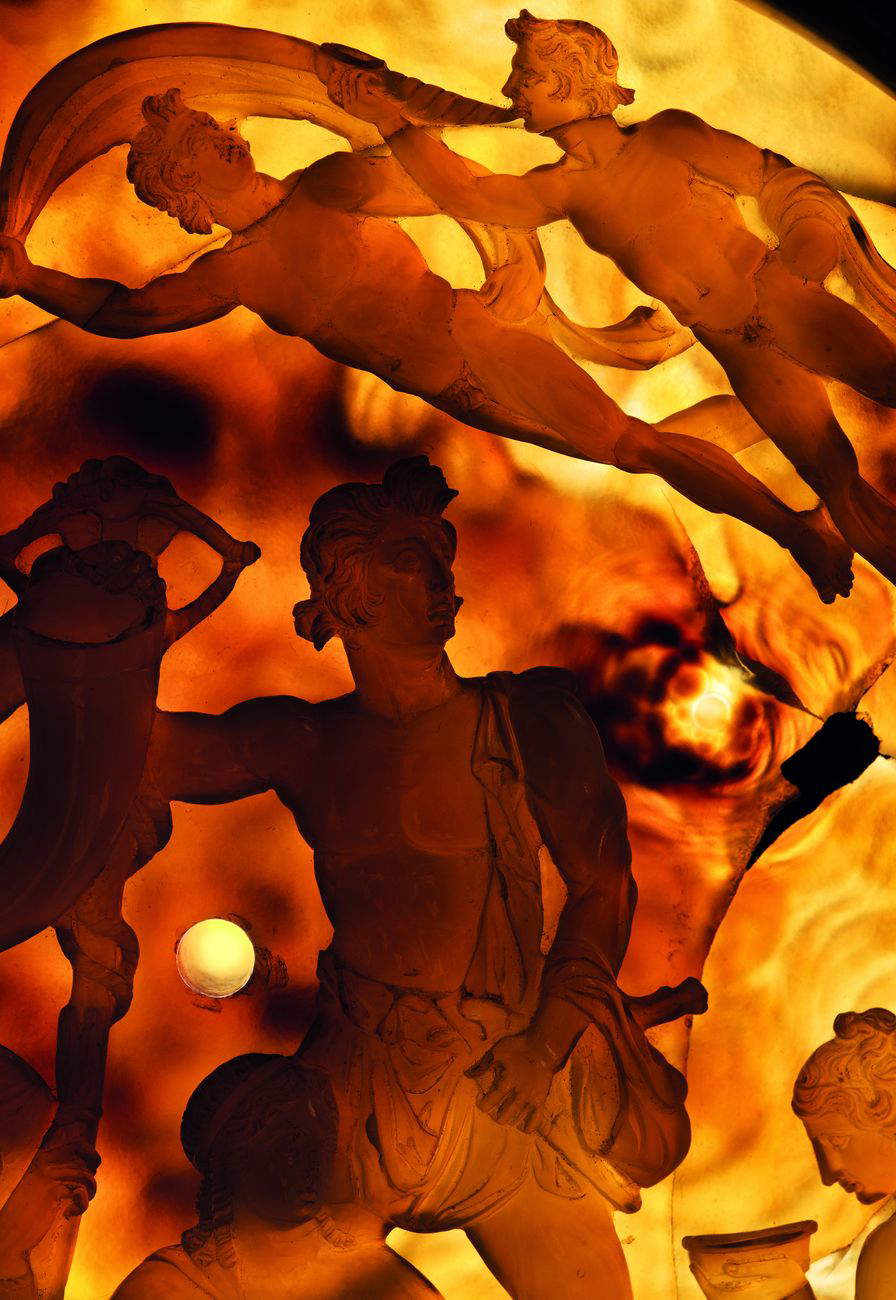
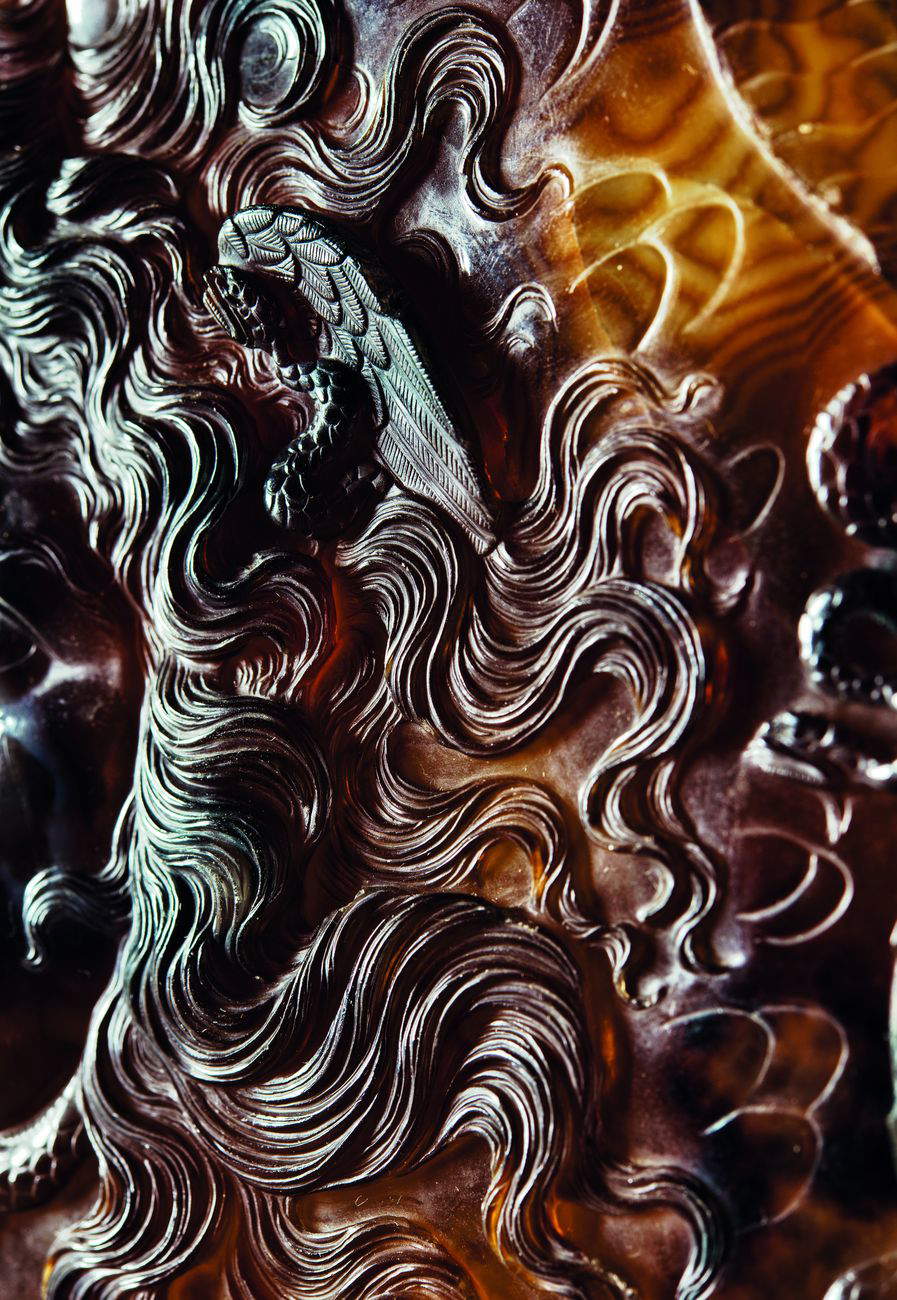

Today, the Tazza Farnese offers itself in all its magnificence to the eyes of the public of the Neapolitan institution: “the attraction that strikes the visitor to the National Museum of Naples enchanted in the admiration of the magnificent cup,” wrote the scholar Matilde De Angelis d’Ossat, “has its own explanation that can be said to be historical, for the direct transmission from the ancient to the present day that keeps vivid and inescapable the deep sense of human experience. Even without knowing the fascinating and complex history of its vicissitudes, the Cup continues to shine with that light that illuminated the courts of princes, kings, emirs, cardinals, popes and emperors without ever being buried, but passed from hand to hand as an extraordinary object of royal ownership.” One of the most interesting peculiarities of the Farnese Cup lies precisely in the fact that it is an object that was not found underground: this large hard stone dish, worked with the cameo technique, was in fact passed on through continuous passages throughout the centuries.
And as a result, there are many reproductions of the Farnese Cup that, by all means, have been made over time. The first drawing is the one, mentioned above, by Mohammed al-Khayyam. Then a bronze cast followed in the sixteenth century by Giovanni de’ Bernardi for Alessandro Farnese, brother-in-law of Margaret of Austria, when the Cup had already become the property of the family. In 1732 it was the turn of the Scottish jeweler William Dugood, who was called that year to estimate the Farnese’s gem collection: during his work he made a large number of casts of the most valuable pieces in the Farnese collections, including two reproductions of the Tazza, one in sulfur and one in papier-mâché. Soon afterwards the engraver Carlo Gregori had illustrated the Tazza on behalf of Duke Francesco Farnese, with a view to preparing a book on the Farnese gems, which, however, never saw the light of day: it eventually flowed, however, into a volume by Scipione Maffei, Osservazioni letterarie che possono servir di continuazione al giornal de’ letterati d’Italia (1738), in which, moreover, a description of the Tazza is offered. “This superb relic of ancient magnificence,” Maffei wrote, “is all of one piece of agate, in the figured part whole and sound.” Then followed a lengthy description, in which the scholar first attempted an interpretation, reading the figures populating the allegory of the Farnese Cup as the family of Ptolemy Auletes (“who was still given the nickname of new Bacchus, and who had precisely two daughters, and had sons, and brothers”), and guessing the Egyptian origin because of the “seat in the form of a sphinx over which the woman rests” (and of the fact that it was Egyptian there was no doubt, since the Greeks depicted the animal with wings). A few decades later (1765-1769) is Filippo Morghen ’s illustration for the album Vedute nel regno di Napoli, published in 1780: a collection of the main sights that could be found in the kingdom.
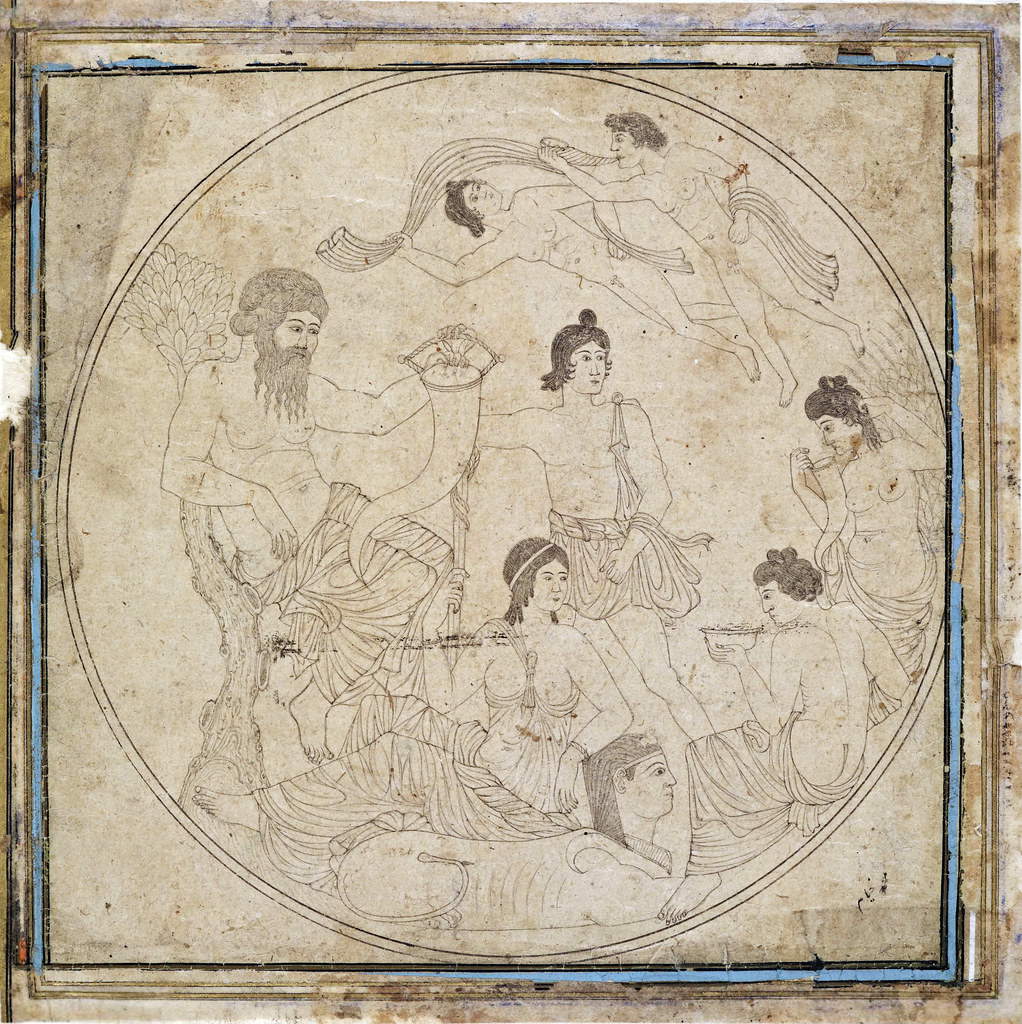
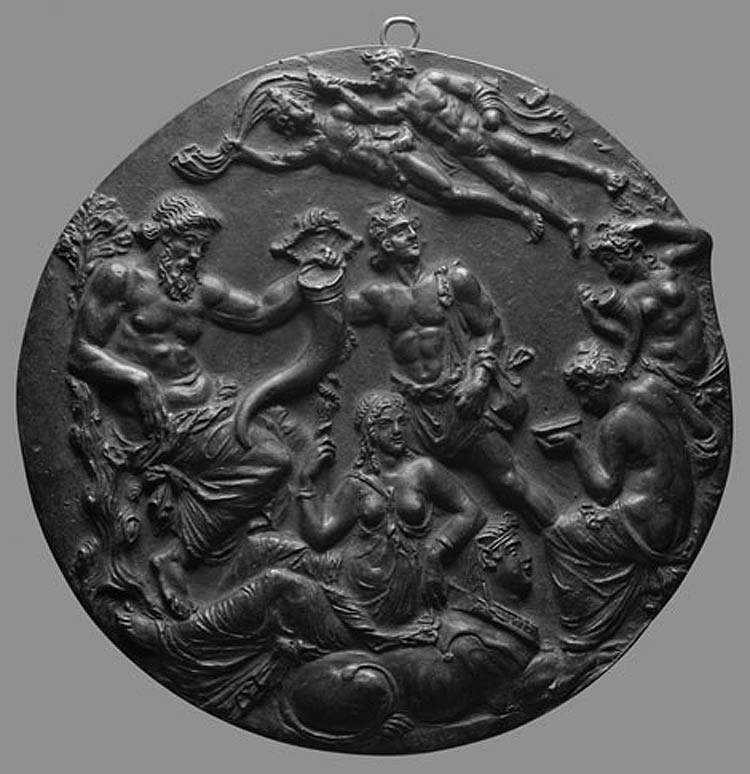
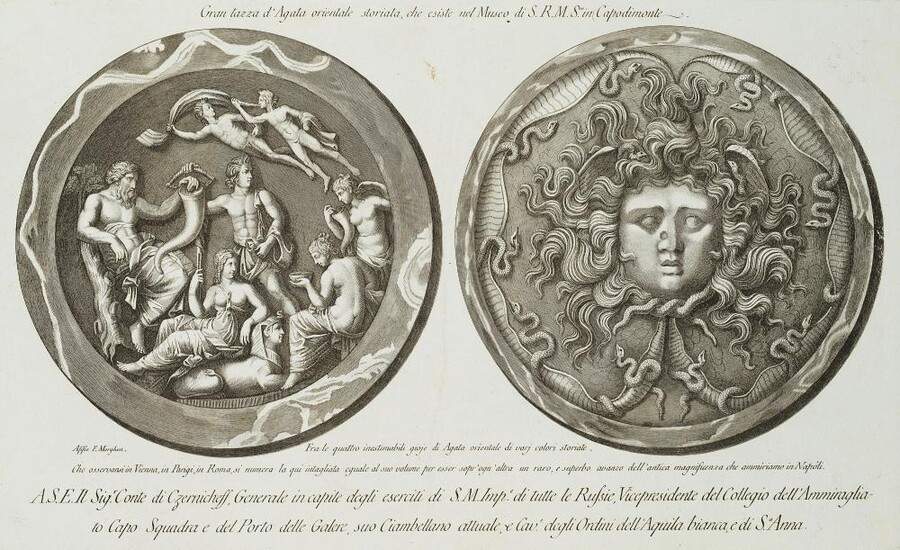
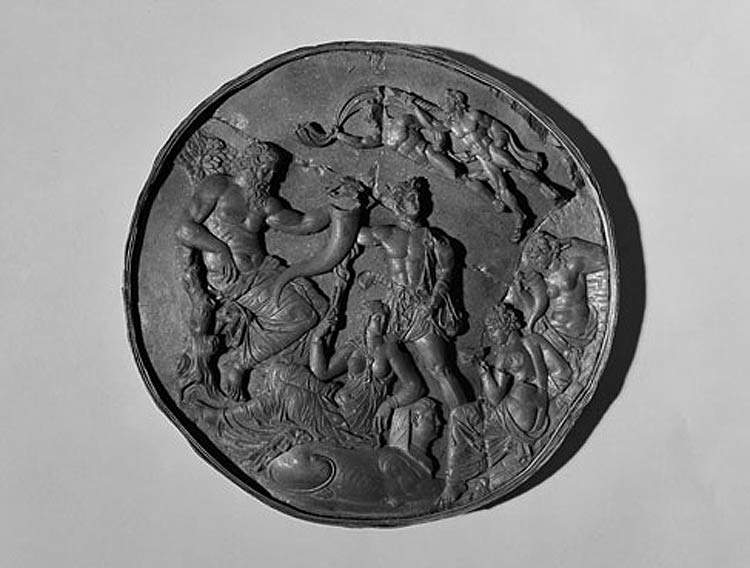

The Farnese Tazza is worked on both sides: on the outer side it features a Gorgon’s head, while on the inner side we find eight figures, carved on a layer of ivory that stands out above the yellowish-black sardonyx agate ground. The figures have been variously interpreted by the many scholars who have tried to read the meaning of the complex allegory. The first convincing interpretation is that of Ennio Quirino Visconti, prefect of the Antiquities of the Papal State, dating back to 1790, and taken up by Johann Michael Adolf Furtwängler in 1900 (it is still the most accepted interpretation today): according to this reading, the gemstone would represent an allegory of the benefits of the floods of the Nile. The great river of Egypt would find its personification in the old man seated with the cornucopia. In front of him is the figure of Horus-Trittolemus, inventor of the plow, caught lifting the helm of a plow and holding a knife in his left hand. At the old man’s feet we find, attached to the lower border, a sphinx caught in profile, which should leave little doubt as to the setting of the scene, and above her here is Eutheneia, holding some ears of corn and which may be considered personification of the flood of the Nile that makes the earth fertile. The two figures flying above together are personifications of the Eutheneian winds that promote flooding, while the last two figures, on the lower right, are two Horai, personifications of the seasons (the one with the cup is the flood season, the one with the cornucopia the harvest season).
Several other readings have been proposed over time. For example, there are those who have wanted to identify, in the various figures, the main deities of the Egyptian pantheon, or even historical figures (for example, the woman sitting above the sphinx has been identified as Cleopatra III, and the man above her her son Ptolemy Alexandros, and there are those who have also advanced that the woman might be the most famous of Egypt’s queens, Cleopatra VII, or the Cleopatra par excellence, the one who married Mark Antony: according to these readings, the man with the beard would thus be one of the Ptolemies), or an allegory of the Ptolemaic reign. There have also been those who have proposed that the Farnese Tazza is a product of the Augustan age, although they are in a minority position with respect to the rest of the critics (those who advocate a later dating advance as arguments, for example, the availability of sardonyx agate, which although known and used spread in the Mediterranean only from the first century B.C., or the depiction of the gorgon, which does not resemble the Hellenistic Medusae but is much more similar to those depicted in gems of the imperial age). A later dating, however, also necessitates an iconographic reinterpretation: thus, it has been proposed to interpret it as an allegory of the Roman Empire and its characteristics.
What, finally, was the function of this singular object? Again, we enter a problematic field: indeed, there are no similar objects of Hellenistic production that have survived in order to make a comparison. It is an oddly shaped object, having a concave face resting on a convex base. Scholar Dorothy Burr Thompson (who, however, proposes an Augustan-era date for the Farnese Cup) believes that the closest term of comparison is a Persian phiale, or small dish for ritual libations: it was not placed on, but held until it was emptied of its contents, after which it was hung so that both decorated surfaces could be seen. This, perhaps, was its most likely function originally. Then, over the centuries, the Farnese Cup became a splendid collector’s item, a boast for its owner, a piece worthy of a king’s collection. And today, a masterpiece among the greatest and most beautiful that can be admired at the National Archaeological Museum in Naples.
Essential Bibliography
Warning: the translation into English of the original Italian article was created using automatic tools. We undertake to review all articles, but we do not guarantee the total absence of inaccuracies in the translation due to the program. You can find the original by clicking on the ITA button. If you find any mistake,please contact us.